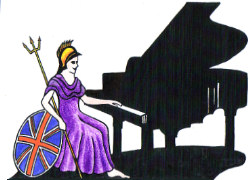Teachers, Accompanists and Piano Entertainers in the UK

UK Piano Page

28 Stamford New Road
Altrincham, Cheshire WA14 1EJ
England
If you are not near to a Dawsons store, you can
30 Pepper Street
Chester, Cheshire CH1 1DF
England
We supply all styles of Acoustic Piano, from
The Hurst Crouch
Borough Green
Sevenoaks, Kent TN15 8TA
England
We offer some of the lowest prices in Europe for
Unit 60 The Triangle
Wolverton Park
Milton Keynes, Buckinghamshire MK125FJ
England
We are a family run music shop in Wolverton,
Unit 2, Crown Centre
Bond Street
Macclesfield, Cheshire SK11 6QS
England
Offers a hand-picked selection of prestigious
Music Festival for performers and guests Our 10th
18-06-2022 12:30PM
The Morecambe Bay Piano Group was set up to extend
11-12-2021 01:00PM
The Morecambe Bay Piano Group was set up to extend
08-01-2022 01:00PM
The Morecambe Bay Piano Group was set up to extend
12-02-2022 01:00PM